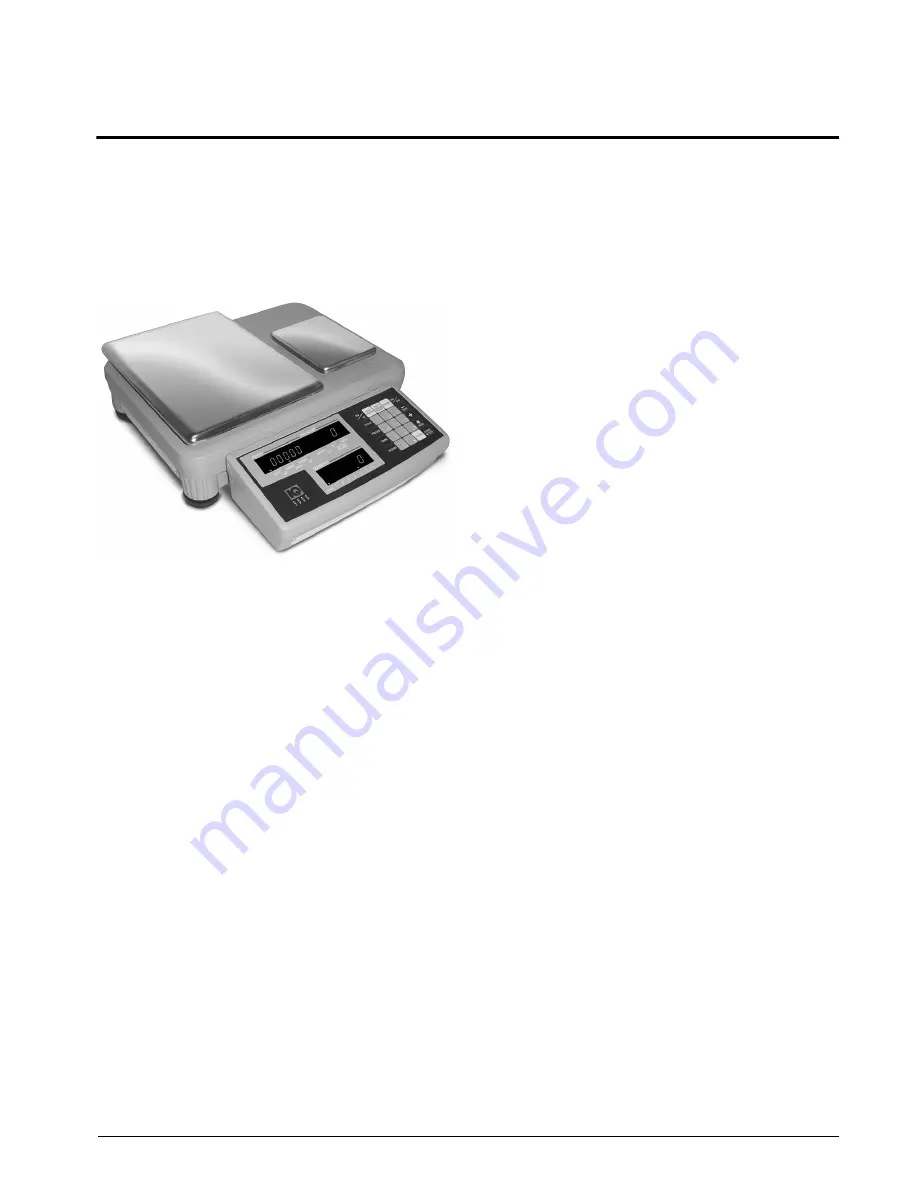
Operator Instructions
11
3.0
Operator Instructions
The following paragraphs contain detailed operator
instructions for the IQ9500 counting scale (see
Figure 3-1). Included are instructions to enter tare
weights, toggle between net and gross weight, enter
unit weights, perform inventory accumulation and
reduction, and toggle between scales. All operator
instructions are conducted with the scale in the
weighing or normal mode.
Figure 3-1. IQ9500 Counting Scale
Counting scale accuracy is primarily determined by
the following factors:
•
Sample size (number of pieces)
•
Total sample size as a percentage of full scale
capacity
•
Piece-to-piece weight variation
As a general rule when determining sample size of
fairly uniform pieces, the larger the sample size the
greater the total sample weight, therefore, the better
the counting accuracy. Selecting the smallest capacity
scale that can obtain the highest counting resolution
should be considered, but should not sacrifice the
capacity required for the heaviest container of parts.
For this specific application, a dual-platform scale
may be the best selection.
There is a direct relationship between piece-to-piece
weight variation (non-uniformity) and counting
accuracy
.
Therefore, elimination of the piece-to-piece
weight variations can be accomplished by:
1. Isolating the sample used to calculate the unit
weight and use the same sample to re-check
the scale.
2. Re-calculating the unit weight from lot-to-lot
of parts. Parts manufactured on one machine
may vary slightly from another machine
relative to weight.
3. Tightening the manufacturing tolerances on
the parts reduces piece weight variations and
increases count accuracy.
3.1
Entering Tare Weights
Tare weights can be entered in the scale by one of two
methods: one-touch tare or digital tare.
NOTES:
•
SPEC 27, bit 2 (Digital Tare Setting) must be a 1 to
allow digital tare.
•
SPEC 27, bits 0 and 1 (Tare Range) must be set to the
appropriate tare range value. Default is 00, 100
percent of full scale.
3.1.1
One-Touch Tare–Tare Weight Unknown
1. If the tare weight value is not known, place
the container, box, or item to be tared on the
scale and press
TARE
. The
WEIGHT
display
should now show
0
and the
NET
annunciator
should illuminate.
2. Remove the container, box, or item from the
scale. The
WEIGHT
display should show a
negative weight value (weight of the tared
container, box, or item).
3. Press
TARE
to reset tare to zero.
3.1.2
Digital Tare–Tare Weight Known
1. If the tare weight value is known, use the
numeric keypad to key in the value and then
press
TARE
.
2. Press
TARE
to reset tare to zero.
NOTE:
For digital tare entry, the decimal must be in the
appropriate place as it would be displayed in the
WEIGHT
display. For example, .250 would be entered as 0.250, not
.250. The
WEIGHT
display shows weight entered with a
negative sign indicating that it is a tare weight.
3.2
Toggling Between Net and Gross
Weight
To toggle between net and gross weight, a tare value
must be entered into the scale. Follow Section 3.1 to
enter a tare value.
NOTE:
SPEC 25, bit 0 (Gross Mode Available) must be
set to 0 (default) to enable gross mode.
After a tare value is entered into the scale, items
placed on the scale will cause the
NET
annunciator to
illuminate and allow toggling between net weight and
gross weight.





























